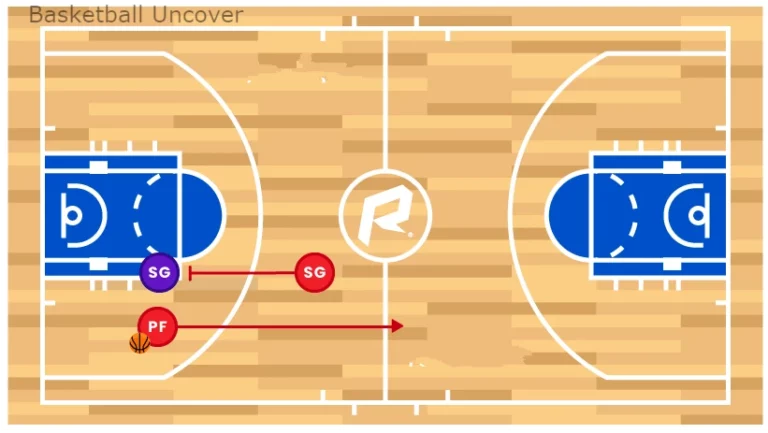What is ATO in Basketball? (Complete Guide)
Basketball, a game of strategy and finesse, has witnessed the rise of various tactics aimed at gaining a competitive edge. One such strategy that has become a cornerstone for many successful teams is ATO in basketball, or “After Timeout” plays.
We discuss the difficulties of ATO, exploring its history, key components, success stories, challenges, and impact on player development. Let’s embark on a journey to understand what makes ATO a game-changer in the world of basketball.
What are after timeout plays
After Time Out plays or ATO in basketball are pre-planned offensive strategies, designed to exploit defensive weaknesses and score after a timeout, injecting strategic surprises and high-percentage scoring chances into the game’s flow.
The Evolution of ATO in Basketball
Early Days (Pre-1980s):
Rudimentary plays, often rely on basic pick-and-rolls or isolations.
Limited scouting and video analysis led to predictable strategies.
Coaches like Red Auerbach emphasized ball movement and player instincts.
Innovation Era (1980s-2000s):
The rise of video scouting and detailed playbooks led to more complex schemes.
Teams exploited mismatches and created scoring opportunities for specific players.
Coaches like Phil Jackson and Pat Riley pioneered the use of motion offenses and backdoor cuts.

Modern Masterpieces (2000s-Present):
ATOs became an art form, with coaches like Gregg Popovich and Brad Stevens pushing the boundaries of creativity.
Plays incorporated decoy actions, misdirection, and intricate passing sequences.
Technology like player tracking and advanced analytics further refined play design.
Also Read: Bench Points in Basketball
Key Milestones:
1980s: The “Michigan Shuffle” becomes a popular ATO play, showcasing the effectiveness of ball screens and back cuts.
1990s: The “Triangle Offense” popularized by Phil Jackson emphasizes spacing and player movement, leading to more unpredictable ATOs.
2000s: The “Princeton Offense” emphasizes ball fakes and backdoor cuts, becoming a staple of ATO playbooks.
2010s-Present: Advanced analytics inform play design, leading to plays specifically tailored to individual player strengths and matchups.
The Future of ATOs in Basketball:
Expect continued innovation and refinement, with technology playing an even bigger role. Imagine coaches using real-time data to adjust plays on the fly, or even using virtual reality simulations to train players on specific ATO scenarios.
The evolution of the ATO reflects the constant growth and adaptation of basketball as a game. It’s a testament to the creativity and strategic minds of coaches, and a source of endless fascination for fans who appreciate the beauty of well-executed plays that turn the tide of a game.

Strategies Against ATO in Basketball
While ATOs offer offensive advantages, coaches also have a toolbox of strategies to counter them and keep their own defenses sharp. Here are some key tactics:
Defensive Communication:
Pre-Scouting: Analyzing an opponent’s ATO tendencies through film study and scouting reports helps anticipate play types and personnel matchups.
Loud and Clear: Clear and concise communication between teammates is crucial. Calling out screens, switches, and assignments quickly disrupts offensive timing and execution.
Switch on Demand: Employing flexible defenders who can switch onto different players depending on the ATO variation throws off the offensive flow.
Defensive Adjustments:
Zone Traps: Utilizing zone defenses with traps can disrupt ball movement and force turnovers, especially against teams reliant on intricate passing in their ATOs.
Deny the Ball: Aggressive denial of the inbound pass or the primary ball handler can disrupt the initial setup and force the offense to scramble.
Help and Recover: Maintaining strong help-side defense and rotating quickly prevents backdoor cuts and open 3-pointers, often the end goals of ATOs.
Mentality and Preparation:
Stay Alert: Maintaining focus and intensity during timeouts is crucial. Players need to be ready to execute defensive adjustments immediately upon returning to the court.
Drill It Till It Sits: Regularly practicing defending ATOs in various scenarios builds muscle memory and prepares players for different play types.
Adapt and React: The best counter-strategies are flexible. Recognizing offensive cues and adjusting in real time can disrupt even the most well-designed ATOs.
FAQs
ATO strategies are employed at various levels, from professional leagues to youth and college basketball. The principles of ATO can be adapted to different settings.
Defensive teams study opponents’ ATO tendencies and develop strategies to counteract specific plays. Quick communication and adaptability are crucial.
Yes, teaching ATO plays at lower levels is beneficial for player development. Coaches can introduce simplified ATO concepts to young players.
Technology, including analytics and video analysis, plays a significant role in optimizing ATO strategies. Coaches use data-driven insights to refine and improve ATO plays.
ATO plays are often designed for critical moments in a game. Coaches strategically deploy ATO in high-pressure situations to maximize their impact.
Conclusion
In conclusion, The battle between offensive ATOs and defensive counters is a constant chess match. Coaches who can anticipate and react effectively will hold the upper hand. By employing a combination of communication, adjustments, and preparation, any defense can stand strong against the onslaught of even the most potent ATOs.







